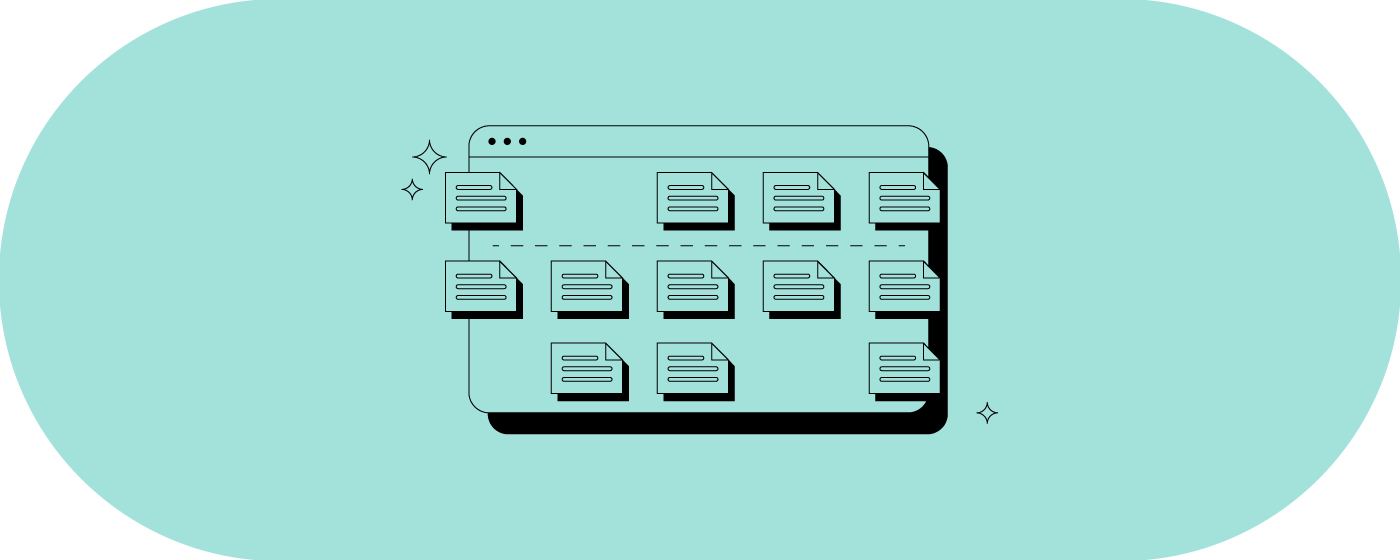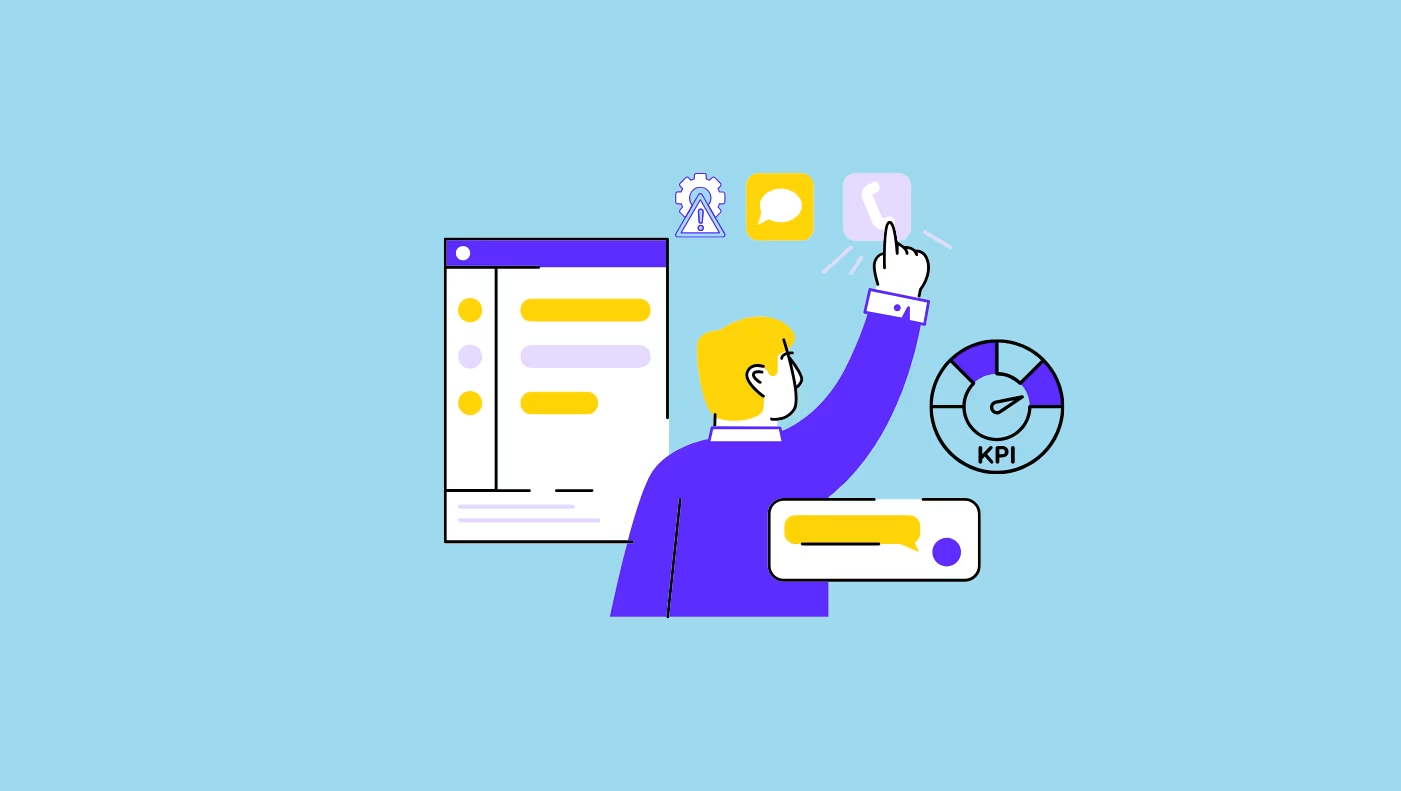Agile methodologies have been sweeping across industries far beyond the software development space. Promising happy clients, business results and super-productive project teams, Agile has been a buzz term for some time.
However, implementing Agile is not always a guaranteed win. In fact, for some businesses it's been a failure. But not because there is anything wrong with the concept. In most cases, it's a matter of a mishandled approach and missed key steps.
Steps we're about to share so you can make sure the Agile transformation you plan to adopt at your service business actually works. Keep reading to understand the five vital steps you must take before you launch Agile for project management at your organization.
Step 1: Determine Agile readiness
Before you say goodbye to traditional project management and dive into implementing the Agile approach at your service business, stop, and consider if your organization is ready. Even though it is an effective system, Agile has its pros and cons. So, it's not going to suit every company, and trying to force-fit the method across you project team might backfire.
According to a INSEAD analysis of Agile adopters and project managers, while some companies thrive after implementation, the ones that are not a good fit, simply end up "burning money" and disrupting the organizational culture, bringing no benefits.
That's why this assessment phase is critical. If you fail to identify the business agility potential through the key factors that determine Agile success, you're setting your business and team up for a downfall from the onset.
Here are several things you can do to understand the actual readiness of your business for Agile:
Do a comprehensive organizational culture fit: Examine how your whole organization currently collaborate, make decisions, and responds to change. Agile works best in organizations that value good team dynamics , flexibility and rapid learning. It doesn't gel well with strict hierarchies and rigid processes.
Evaluate existing project management processes: Assess how your existing workflows processes handle requirements, planning, and delivery. Is there Agile potential in you operations or are you in an industry that needs structured and strict processes and rules?
Assess current team structures and skill levels: Determine whether your organization has the knowledge and ability to work as a cross-functional team and manage their own workflow effectively.
Even though Agile methodology initiated in the IT sector, its reach continues to extend to other industries, including marketing, product development and customer service. So it's ideal for service-oriented companies that are ready.
Insight: According to Agile Sherpas, 37% of marketing teams use Agile and a further 61% of traditional marketers plan to go Agile within 12 months. On top of that, 96% of Agile marketers describe their experience as positive and only 4% as neutral.

Step 2: Build support & get buy-in
With a detailed understanding of your organization’s readiness, the next step is to build support. Before you start getting everyone warming to the idea of Agile, you need to work out where the initiative has come from and adapt you support campaign accordingly.
An Agile methodology initiative comes in two forms:
Top-down: This is where business founders or the leadership team gets excited about the concept and wants everyone to get on board.
Bottom-up: This is when teams and team leaders see Agile potential within their workflows and project management processes and seek support from business heads to make it a reality.
How to get buy-in for top-down Agile implementation
Leadership cannot simply demand an organization go Agile. They need to understand the Agile concept fully, provide the support and resources need for implementation, and champion it to the end.
Some ways for leaders to get buy-in for Agile includes:
Manage push back with facts on benefits of Agile
Provide resources and guidance
Set up designated owners of the Agile transition project
Remove roadblocks
Change their own individual management style
How to get buy-in for bottom-up Agile implementation
When Agile starts as a bottom-up approach it can be extremely difficult to get leadership buy-in. Without executive sponsorship and an official Agile transformation project in place, the initiative may slowly fizzle out.
Some things teams can do to get buy-in for Agile from the leaders includes:
Educate senior management
Provide research and studies that support Agile methodology
Provide a list of clear benefits for the business
Come up with a Agile transformation business case
Remember for successful Agile adoption you need strong buy-in at all levels.
The only surefire way to get that is to address concerns and resistance. This can be done through clear, transparent and consistent communication. Make sure to include everyone. People from all levels of staff need to understand why Agile makes sense for the business. This is what will allow you to engage everyone right from the get-go.
Step 3: Form cross-functional teams & develop Agile skills
When you have full support and buy-in across the entire organization, it's time to set up teams who are skilled enough to make Agile work.
Creating effective agile teams requires more than just reshuffling people into new groups. You need to focus on building the right mix of technical skills, collaborative abilities, and agile mindset that will enable teams to deliver value consistently.
Here is a list of thing you can do as an agency founder or business leader that can make your Agile implementation more successful:
Create cross-functional teams with diverse skills: Form teams with all the skills needed to deliver value. Your teams should include a diverse mix of skill sets, from different disciplines that are empowered to make decisions, can adapt and act quickly to drive high quality results.
Provide Agile training programs: Help your teams reach peak performance and adapt quickly by providing structured training, certifications and mentoring programs.
Even with the right composition of team members, your Agile initiative could fail if your people don't know how to work in an Agile way. That's why training and upskilling is so important. New concepts like daily stand-ups, sprint planning, backlog grooming and retrospectives are unfamiliar processes for most service businesses such as marketing agencies. So invest in building your team's knowledge and capabilities in this space.
It might be worth considering tailoring your learning programs to your particular industry. For example, a marketing agency might choose to organize their account managers and creatives to get Agile marketing certifications where they learn to run client campaigns in sprints or use Kanban boards for content production.

Step 4: Choose the right Agile framework for your business
Many organizations struggle with this step because they try to implement multiple frameworks simultaneously or choose a framework that doesn’t fit their context. The key is to start with one approach and adapt it to your needs rather than trying to create a custom methodology from scratch.
By having a consistent Agile framework that enables you and your teams to organize work in iterations, visualize workflow, and continuously improve your processes, you create predictability and reduce the confusion that comes from inconsistent practices.
When it comes to service businesses, they can vary depending on their work type and industry. What works for a marketing agency, might not work for an IT consulting firm. That's why choosing the framework that's most adaptable for your type of project work is crucial.
The below three Agile frameworks have proven to be optimal for service businesses.
Scrum
Scrum is the most widely used Agile framework. It's structured in time-boxed iterations called sprints which are usually 1-4 weeks long. In Scrum frameworks, you have a Scrum Master who facilitates the process and a Product Owner who manages the work backlog.
It involves:
Planning work for each sprint
holding daily standup meetings
Reviewing progress at the end
This framework works best in environments where you can plan and deliver work in increments. It's ideal for software development and project-based work where you have clear deliverables.

Kanban
Kanban is a more visual-oriented Agile methodology. The core component of the Kanban approach is the KanBan board which presents stages of work in columns and task cards that move across the columns as work progresses.
Columns: May include work stages such as To do, In Progress, Done or Blocked
Cards: Are individual tasks with descriptions and task information such as due date, and labels for work types.
This framework is highly flexible which makes it ideal for service teams with a steady stream of incoming tasks and multiple projects running at the same time. It works well for marketing teams and creative design agencies, as well as customer support teams that deal with tickets.

Lean
Although Lean isn't exactly an Agile framework, it is a set of principles that has been heavily influenced by Agile thinking. The idea behind it is to focus on eliminating waste, optimizing value and drive continues improvement.
In an Agile context, the Lean approach could include:
Eliminating excessive documentation or wait times
Producing a minimum viable product instead of chasing perfection and prolonging launch
Lean principles are ideal for businesses and industries where efficiency and continuous learning and evolvement is paramount. The great thing about Lean is that it can be applied along with Scrum and Kanban methods.

Step 5: Implement tools for seamless Agile project teamwork
Once you have your frameworks selected, it’s crucial that you support them with the right tools, especially if there are complex projects or distributed or remote teams.
Agile teams thrive on transparency, quick communication and the ability to adapt in real-time.
The right technology can make the difference between a successful agile transformation and a failed one. So equip your team with software that supports Agile workflows and removes friction.
But what exactly does a great Agile proeject management tool like like?
Well, it has the following:
Visual task tracking (Kanban boards, Timeline views)
Multiple communication and collaboration features
Project tracking dashboards and reports
Integrated task and time-tracking
One thing that often gets overlooked when choosing software tools is user-friendliness. This is super important for any business need but even more so when you're implementing agile because the entire concept is based on the principle of speed, practicality and efficiency.
So do your best to go for an intuitive project management tool that doesn't have an extensive learning curve.

ActiveCollab: The service business tool for Agile project teams
Service businesses that successfully implement agile practices see improvements in delivery speed, product quality, client satisfaction, and employee engagement.
However, implementing Agile is a transformation process for many service businesses. It's not so much about following a rigid set of rules, as it is about embracing a mindset that values collaboration, continuous improvement, and delivering value to clients.
Once you choose the right framework, having the right software platform can make all the difference.
That's where ActiceCollab comes in. As a project management tool specially designed for service businesses, it has everything you need to make the switch to Agile.
With multiple project views ActiveCollab supports various Agile workflows. It lets you organise and view project tasks in Kanban board as well as Timeline or Gantt charts. Integrated team collaboration and communication features give you multiple options for everyone to stay in the loop through, task comments, discussions or in-app messages.
But what makes ActiveCollab so awesome for Agile is its client collaboration capability. You can invites as many clients as you like to collaborate on. projects in real-time so you can gather feedback, get approvals and have discussions.
Are you ready to take you service team to Agile?
Need a tool that's been tailored to meet the unique needs of service businesses like marketing and creative agencies?
Don't overlook ActiveCollab. Sign up for our 14-day free trial or book a demo with one of our people to see how our platform can help you make the switch to Agile a success!


